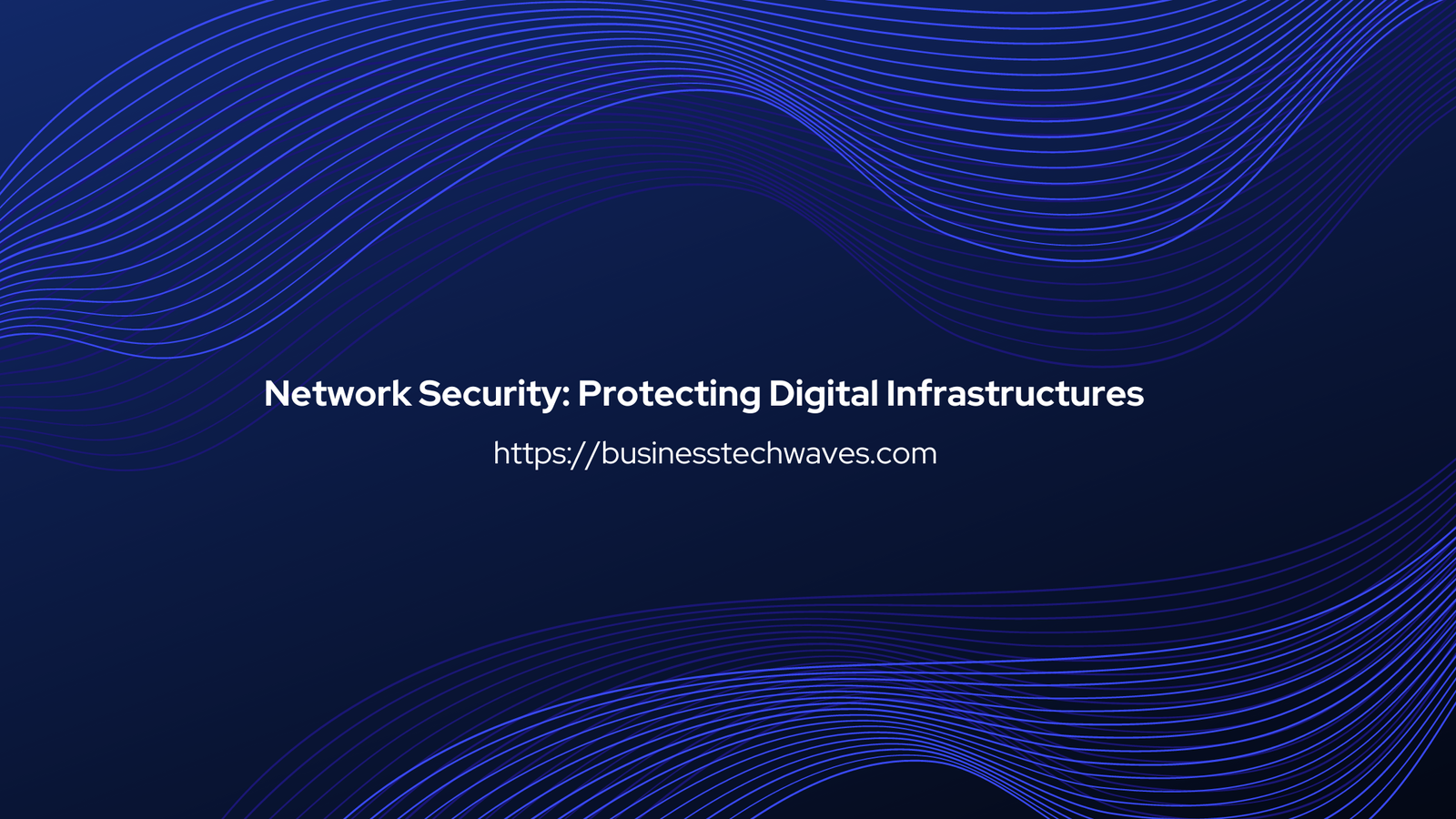
Network Secure: Best Protecting Digital Infrastructures 2024
Network secure in today’s digital age, networks serve as the backbone of communication, business operations, and data transmission. The rapid expansion of interconnected devices, cloud services, and the Internet of Things (IoT) has created both tremendous opportunities and significant risks. As cyber threats grow in sophistication and scale, network security has become a top priority for organizations and individuals alike. This article network secure delves into the critical aspects of network security, its key challenges, and strategies for safeguarding digital infrastructures.
1. Understanding Network Security
Network secure refers to the policies, practices, and technologies employed to protect the integrity, confidentiality, and availability of data and resources on a network. It encompasses a broad range of activities and controls aimed at preventing unauthorized access, misuse, malfunction, and data theft.
There are three primary goals of network secure, often referred to as the CIA triad:
- Confidentiality: Ensuring that sensitive information is accessible only to authorized individuals or systems.
- Integrity: Guaranteeing that data remains accurate and unaltered, ensuring that unauthorized changes are detected and prevented.
- Availability: Ensuring that network resources are available and operational when needed, preventing disruptions caused by attacks or system failures.
2. The Evolving Threat Landscape
Cyber threats targeting networks have evolved from simple attacks aimed at individual users to highly sophisticated, state-sponsored cyber operations targeting governments, multinational corporations, and critical infrastructure. Some of the most common threats to network security include:
2.1. Malware
Malicious software, or malware, encompasses a wide range of threats such as viruses, worms, trojans, ransomware, and spyware. Malware can disrupt operations, steal sensitive information, and provide backdoor access to attackers. Ransomware, in particular, has grown in prominence, where attackers lock users out of their data and demand a ransom for its release.
2.2. Denial of Service (DoS) and Distributed Denial of Service (DDoS) Attacks
In a DoS attack, the attacker overwhelms a network or server with a flood of traffic, rendering it inaccessible to legitimate users. DDoS attacks are more devastating as they involve multiple compromised systems (often part of a botnet) to launch the attack, making it difficult to mitigate and trace.
2.3. Phishing and Social Engineering
Phishing attacks involve tricking users into divulging sensitive information, such as login credentials, by impersonating trusted entities. Social engineering exploits human behavior to bypass technical security measures. Attackers may pose as company employees or vendors to gain access to confidential data or systems.
2.4. Advanced Persistent Threats (APTs)
APTs are prolonged and targeted cyberattacks, typically carried out by well-funded and highly skilled adversaries. These attacks are often aimed at stealing valuable data, compromising critical infrastructure, or engaging in cyber-espionage. Unlike typical attacks that are quick and destructive, APTs remain undetected for long periods, slowly extracting information.
2.5. Insider Threats
Not all network threats come from external hackers. Insider threats occur when individuals within an organization misuse their access to compromise network security. This could be due to negligence, such as inadvertently exposing sensitive data, or malicious intent, like sabotage or espionage.
3. Key Components of Network Secure
Effective network security requires a layered approach, combining multiple technologies, processes, and policies. Below are some of the essential components:
3.1. Firewalls
A firewall is a network security device that monitors and controls incoming and outgoing network traffic based on predetermined security rules. Firewalls act as a barrier between trusted internal networks and untrusted external networks, blocking unauthorized access while allowing legitimate communication.
3.2. Intrusion Detection and Prevention Systems (IDPS)
IDPS solutions monitor network traffic for suspicious activity. An Intrusion Detection System (IDS) alerts administrators when potential threats are detected, while an Intrusion Prevention System (IPS) actively blocks or mitigates those threats.
3.3. Virtual Private Networks (VPNs)
A VPN creates a secure, encrypted connection over a less secure network, such as the internet. This is especially useful for remote workers who need to access a company’s internal network securely from different locations. VPNs prevent eavesdropping and unauthorized access to transmitted data.
3.4. Encryption
Encryption is the process of converting data into a coded form to prevent unauthorized access. Only authorized users with the correct decryption key can read the data. Encryption is vital for protecting sensitive information in transit (such as during online banking transactions) and at rest (such as data stored in a database).
3.5. Access Control and Authentication
Access control mechanisms ensure that only authorized users can access specific resources on a network. Authentication technologies, such as passwords, biometrics, and multi-factor authentication (MFA), verify users’ identities before granting access to network systems.
3.6. Security Information and Event Management (SIEM)
SIEM solutions collect and analyze security-related data from various sources, providing a real-time overview of an organization’s security posture. SIEM tools enable security teams to detect and respond to potential threats more quickly.
4. Network Secure Best Practices
Securing a network is a continuous process that requires diligent planning, monitoring, and updating. Below are some best practices organizations and individuals can follow to enhance their network security.
4.1. Regular Software and Hardware Updates
Outdated software and hardware often have vulnerabilities that can be exploited by attackers. Regularly updating and patching systems ensures that known vulnerabilities are fixed, reducing the attack surface.
4.2. Strong Password Policies
Weak passwords remain one of the most common causes of network breaches. Enforcing strong password policies, such as requiring complex passwords and implementing MFA, can significantly improve security.
4.3. Network Segmentation
Segmenting a network into smaller, isolated sections can limit the spread of a cyberattack. In the event of a breach, network segmentation can contain the damage to a specific area, preventing it from affecting the entire organization.
4.4. Employee Training and Awareness
Human error is often the weakest link in network security. Providing regular cybersecurity training to employees can help them recognize phishing attempts, avoid malicious downloads, and adhere to security protocols.
4.5. Continuous Monitoring and Incident Response Plans
Continuous monitoring of network traffic allows organizations to detect unusual activity and potential threats in real-time. Additionally, having an incident response plan in place ensures that the organization can respond swiftly and effectively to mitigate the damage in the event of a breach.
5. Emerging Trends in Network Secure
As technology evolves, so do the strategies for protecting networks. Several emerging trends are shaping the future of network security:
5.1. Zero Trust Architecture
The Zero Trust model assumes that no user or device, inside or outside the network, should be trusted by default. Instead, every request for access must be verified through strong authentication methods, continuous monitoring, and strict access controls. This approach minimizes the risk of insider threats and lateral movement within a network.
5.2. Artificial Intelligence (AI) and Machine Learning (ML)
AI and ML are increasingly being used to enhance network security. These technologies can analyze large amounts of data to identify patterns, detect anomalies, and respond to threats more quickly than traditional methods. AI-powered solutions can also predict potential attacks, enabling organizations to proactively defend their networks.
5.3. Cloud Security
With the rise of cloud computing, securing cloud environments has become a priority. Organizations must adopt robust cloud security practices, including encryption, access control, and continuous monitoring, to protect data stored in the cloud.
5.4. Blockchain for Security
Blockchain technology offers potential applications in network security by creating immutable records of transactions. Blockchain can enhance trust, integrity, and traceability in securing network transactions, especially in decentralized environments such as IoT.
5.5. Quantum Cryptography
While quantum computing presents a challenge to traditional encryption methods, quantum cryptography offers new possibilities for securing networks. Quantum key distribution (QKD) ensures that encryption keys are virtually impossible to intercept, offering enhanced protection for sensitive communications.
Conclusion
Network Secure is a dynamic and ever-evolving field that requires constant vigilance, adaptability, and innovation. As cyber threats grow in complexity, organizations and individuals must adopt a layered approach to security, combining technological solutions with robust policies, employee education, and continuous monitoring. By understanding the risks and implementing best practices, we can protect our networks and ensure the integrity, confidentiality, and availability of our digital assets in an increasingly connected world.


